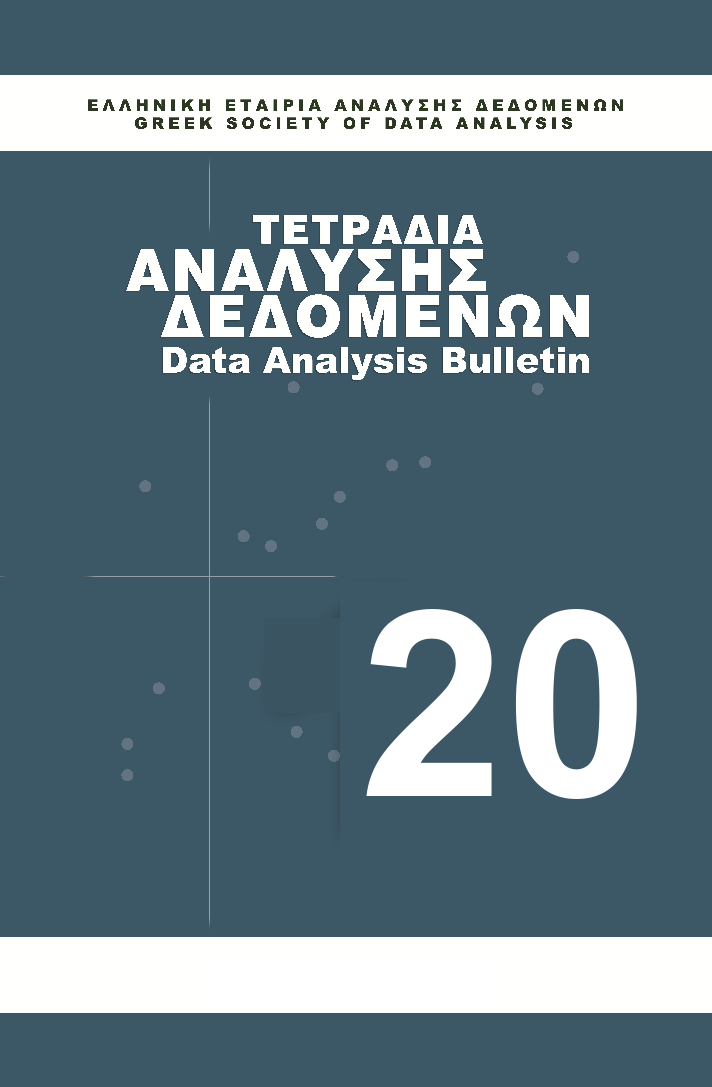Strategies for mental solving of graphic tasks with functions, 3rd Lyceum students: Content analysis strategy of interviews with Data Analysis methods

Abstract
In this study, a methodological scheme for using Data Analysis methods (AFC, HCA, Biplot Analysis, Kriging Interpolation) is presented and proposed for the processing of speech data, which were collected through a clinical interview from 42 3rd grade Lyceum students, regarding their responses to nine graphs of two functions (linear-constant or quadratic-constant or two-linear) and was asked to find mentally the result of their sum or difference. The analysis of the findings showed that the students, during the mental solution of tasks with functions, sometimes developed algebraic/parametric strategies, sometimes graphical/geometric and sometimes graphical/numerical or a combination of these. According to the main results of the work, the choice of strategy depends both on the characteristics of the student (knowledge, preferences, experience) and the nature of the task. In tasks with linear functions, the students chose point-by-point approaches, algebraic-numerical or a combination thereof, while in tasks with curves they chose holistic approaches, graphic-geometric. Also, students with better math performance showed a greater degree of flexibility in the strategies they used and had more success. Through AFC was highlighted, the contrast between the point-by-point approaches, algebraic-numerical strategies and the holistic approaches, graphic-geometric, as well as the contrast between the combined graphic/geometric-graphic/numerical and graphic/geometric-algebraic/parametric strategies. Ordinary Kriging spatial interpolation method was used to estimate and present the students' success rates in the strategies and the result of the interpolation in the form of a contour map was projected to the factorial level of the AFC.
Article Details
- How to Cite
-
Papafilippou, N., Koutsos, T., Markos, A., & Menexes, G. (2024). Strategies for mental solving of graphic tasks with functions, 3rd Lyceum students: Content analysis strategy of interviews with Data Analysis methods . Data Analysis Bulletin, 20(1), 95–108. Retrieved from https://ejournals.epublishing.ekt.gr/index.php/dab/article/view/33715
- Section
- Empirical studies

This work is licensed under a Creative Commons Attribution-NonCommercial-NoDerivatives 4.0 International License.
Authors who publish their work in the journal DATA ANALYSIS BULLETIN agree to the following terms:
1. Authors will not be charged any submission, processing or publication fees for their work. These costs are covered by the Greek Society of Data Analysis.
2. The copyright of papers published in the journal DATA ANALYSIS BULLETIN is protected by the Creative Commons Attribution-NonCommercial-NoDerivatives 4.0 International license. The Authors retain the Copyright and grant the journal the right of first publication. This license allows third party licensees to use the work in any form for non-commercial purposes only. If third parties modify or adapt the content, they must license the modified material for noncommercial purposes only. If others modify or adapt the material, they must license the modified material under identical terms.
3. Provided that the terms of the licence concerning the reference to the original author and the original publication in the journal DATA ANALYSIS BULLETIN are maintained.
4. Authors may enter into separate and additional contracts and agreements for the non-exclusive distribution of the work as published in the DATA ANALYSIS BULLETIN journal (e.g., deposit in academic repositories), provided that the acknowledgement and citation of the first publication in the DATA ANALYSIS BULLETIN journal is acknowledged.
5. The DATA ANALYSIS BULLETIN journal allows and encourages authors to deposit their work in institutional (e.g. the repository of the National Documentation Centre) or thematic repositories, after publication in DATA ANALYSIS BULLETIN and under Open Access conditions, as determined by their research funders and/or the institutions with which they collaborate, as appropriate. When submitting their work, authors should provide information on the publication of the work in the journal and the sources of funding for their research. Lists of institutional and thematic repositories by country are available at http://opendoar.org/countrylist.php. Authors can deposit their work free of charge in the repository www.zenodo.org, which is supported by OpenAIRE (www.openaire.eu ), as part of the European Commission's policies to support Open Academic Research.




